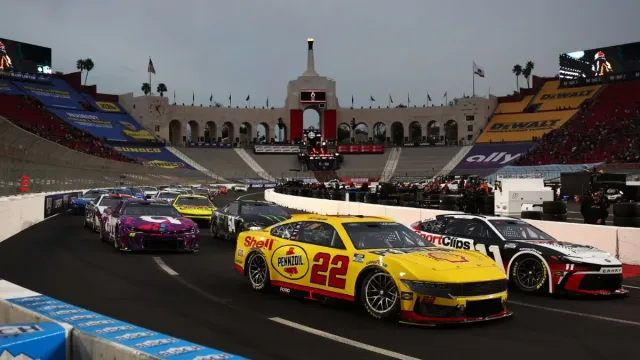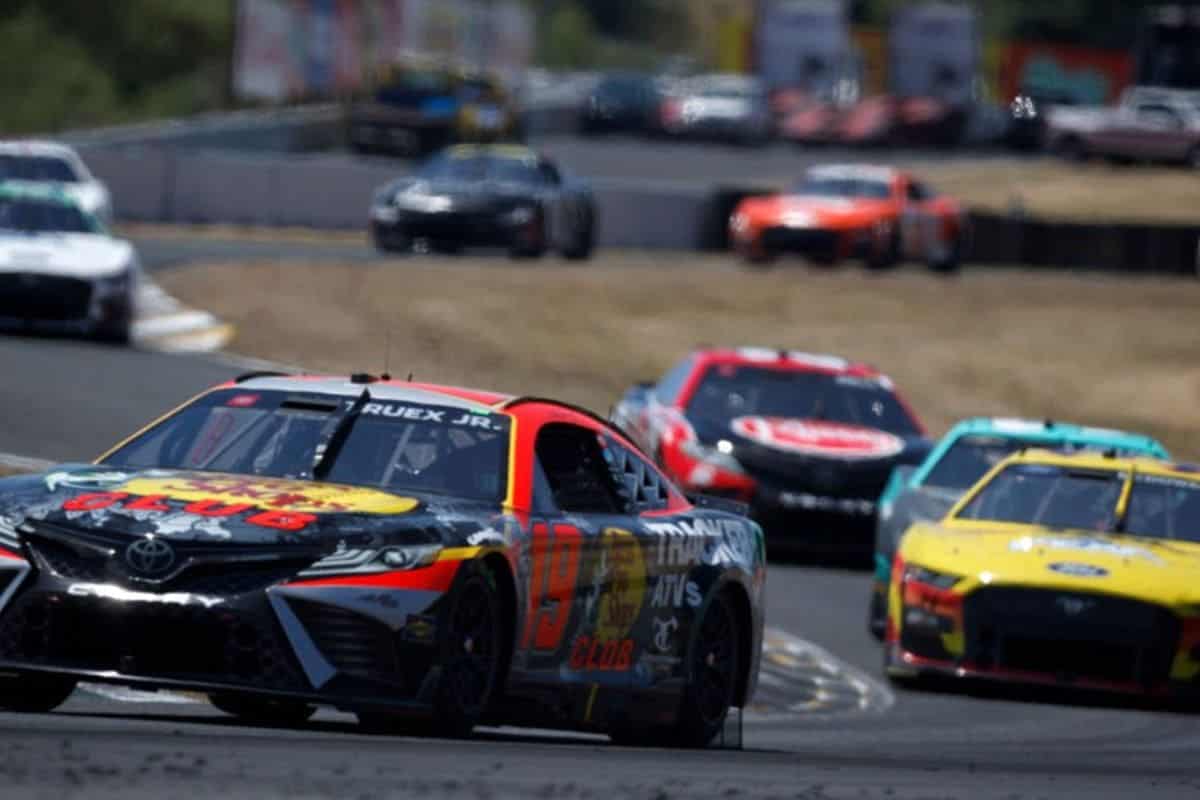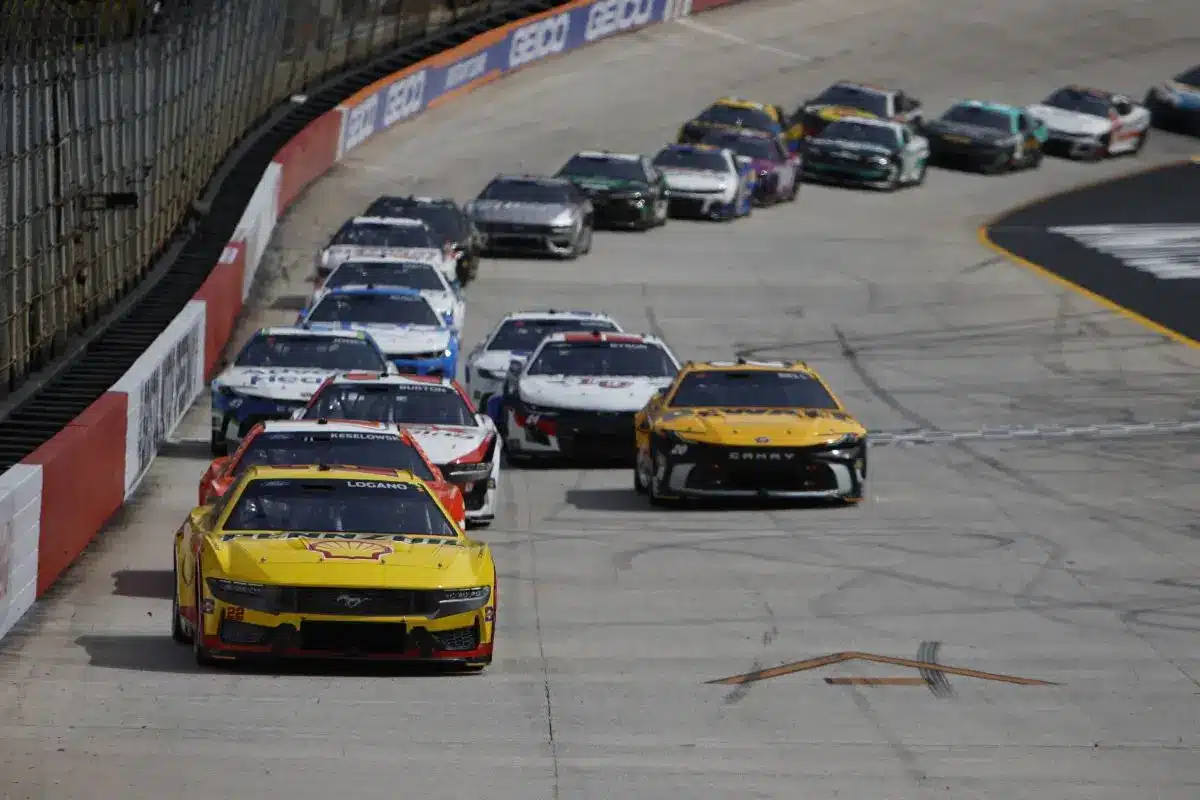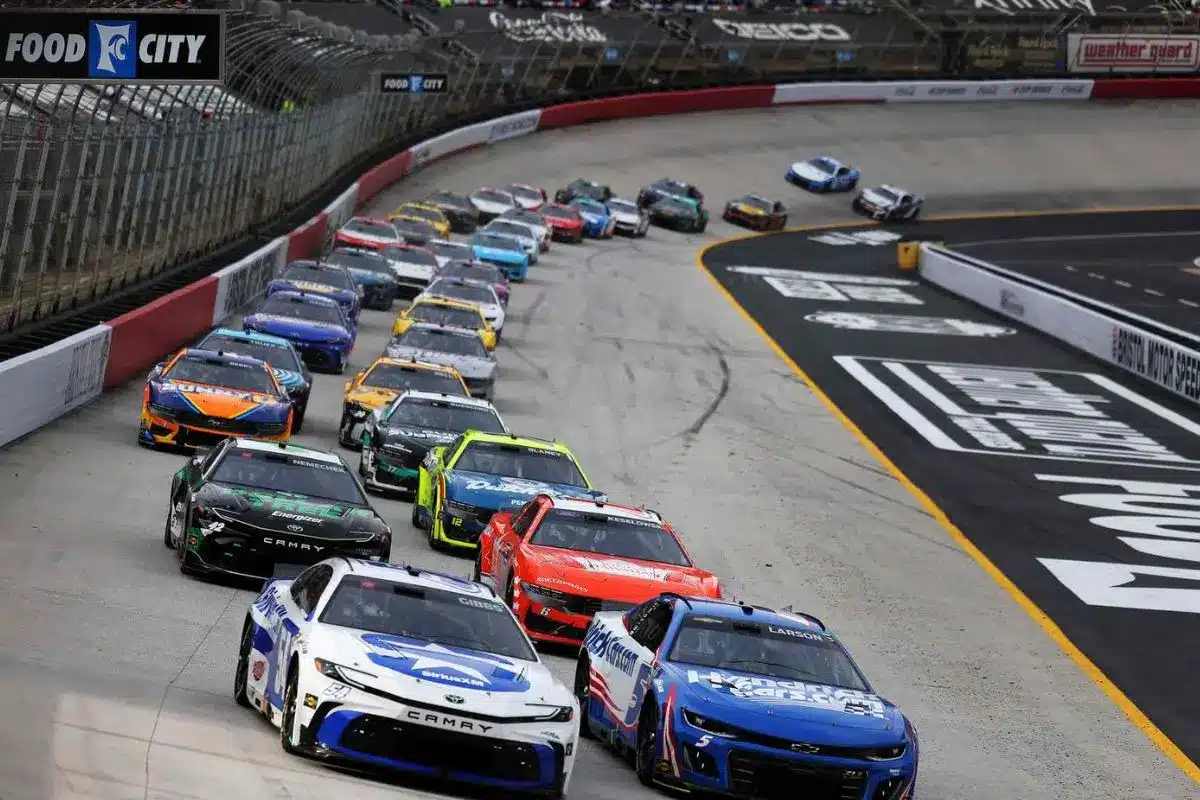NASCAR’s Last-Minute PJ1 Decision: NASCAR’s abrupt decision to apply PJ1 to the Bristol track mere hours before the race has ignited considerable backlash from crew chiefs, who found themselves unprepared for such a last-minute alteration. This unexpected change not only disrupted meticulously crafted race tactics but also raised critical questions about communication and decision-making within the organization. As crew chiefs like Drew Blickensderfer voiced their concerns regarding competitive fairness, the implications of this hasty move extend far beyond immediate race adjustments. What does this incident reveal about the broader dynamics of NASCAR’s governance and its impact on teams’ tactical planning?
Key Highlights
- NASCAR’s unexpected PJ1 application left crew chiefs scrambling to adjust strategies just hours before the race.
- Drew Blickensderfer voiced confusion and frustration over the lack of communication regarding the PJ1 decision.
- Quick recalibrations were needed for tire pressures and suspension settings, disrupting race preparations.
- The sudden change forced teams to rethink tire strategies and pit stop timing, increasing unpredictability.
- Criticism of NASCAR’s execution raised concerns about competitive integrity and trust within the racing community.
Last-Minute PJ1 Decision and Crew Chief Reactions
In a surprising turn of events, NASCAR’s decision to apply PJ1 to the Bristol racing surface has left many crew chiefs scrambling to adapt. This last-minute alteration has created a ripple effect throughout the teams, forcing them to reassess their strategies and make hasty adjustments to their car setups.
Although the PJ1 compound is generally preferred by drivers due to its ability to wear off and open up the top groove, the sudden implementation has raised considerable concerns among crew chiefs who were caught off guard.
To compound the issue, NASCAR’s communication regarding this critical change was insufficient. While the sanctioning body claimed to have consulted with drivers, many crew chiefs found themselves unaware of the PJ1 application until it was announced. This disorganization not only undermines the collaborative spirit that typically characterizes the sport but also jeopardizes the competitive integrity of the event.
The PJ1 situation highlights the intricate relationship between track conditions and vehicle performance, emphasizing the necessity for teams to be agile and proactive in their approach.
With the unpredictability of tire wear and grip levels introduced by the PJ1, crew chiefs are faced with the challenging endeavor of recalibrating their strategies on short notice. As they grapple with these unexpected challenges, the broader implications for race outcomes and team dynamics become increasingly apparent.
Crew Chiefs Express Frustration
Crew chiefs across the paddock have voiced considerable frustration regarding NASCAR’s abrupt PJ1 application, which caught many teams off guard. The announcement came at 1:00 PM EST, just hours before the garage opened at 3:30 PM, leaving teams with insufficient time to recalibrate their setups. Drew Blickensderfer, crew chief for Noah Gragson and the No. 10 team, encapsulated the sentiment by stating, “Yeah, no idea on the crew chief side,” highlighting the confusion that permeated the paddock.
This last-minute decision complicates the already intricate task of race preparation, as teams had meticulously set their vehicles based on practice data and anticipated track conditions. The introduction of PJ1—a traction compound designed to improve grip—requires not only a thorough understanding of its effects but also specific adjustments to tire pressures, suspension settings, and general vehicle dynamics.
With such critical modifications needed, the time constraints imposed by NASCAR’s timing exacerbate the challenge for crew chiefs. The frustration stems not only from the logistical difficulties but also from a perceived lack of communication and foresight from NASCAR.
As the dust settles on this decision, the ripple effects of NASCAR’s last-minute PJ1 application will likely reverberate through the teams, raising questions about future communication protocols and the integrity of race preparation in the sport.
Impact on Race Strategy
Although the last-minute decision to apply PJ1 has left teams scrambling for adjustments, its implications on race strategy are profound. Crew chiefs like Matt McCall have expressed concerns that the sudden announcement alters the competitive landscape markedly. With limited time to adapt, teams must reevaluate tire strategies, pit stop timing, and car setups—elements vital to performance, especially on a track as challenging as Bristol.
“It’s going to change the race for sure.”
“There was no meeting on our end. I just got the email saying they’re putting down up to two feet of PJ1 on the bottom and that’s all we knew.” – McCall
The unexpected application of PJ1 creates a scenario where teams must navigate uncharted territory, potentially transforming the race into a high-stakes gamble. The absence of prior communication has left many crew chiefs feeling blindsided, and the lack of clarity regarding the PJ1 application heightens the uncertainty surrounding tire wear and grip levels.
NASCAR’s Rationale for the Change
The decision by NASCAR to apply PJ1 at Bristol stems from a desire to improve the thorough racing experience, particularly in view of the tire wear issues observed during the spring race. This decision was not taken lightly, as it followed an extensive analysis of the tire degradation patterns that impacted the previous event.
The dramatic tire wear led to an exhilarating race; however, during a recent practice session, the Goodyear tires exhibited considerably less wear, raising concerns about the competitive integrity of the upcoming race.
NASCAR’s rationale appears focused on reintroducing the dynamic racing characteristics that made the spring encounter memorable. The application of PJ1 is seen as an effort to boost grip and promote multi-groove racing, thereby increasing competitiveness on the track. By creating a more aggressive surface, NASCAR aims to counteract the lack of fall-off observed during practice and guarantee that drivers can push their vehicles to the limit while maintaining tire performance.
However, this last-minute decision has drawn criticism from crew chiefs and teams who were unprepared for the sudden change in track conditions. The timing of the PJ1 application raises questions about its effectiveness and the potential disruption it may cause to pre-established race strategies.
News in Brief: NASCAR’s Last-Minute PJ1 Decision
The abrupt implementation of PJ1 on the Bristol racing surface has raised considerable concerns among crew chiefs regarding communication and tactical preparation. This decision not only disrupted established race plans but also highlighted potential issues related to competitive integrity within NASCAR. Such last-minute changes can undermine the fairness of the competition, prompting a reevaluation of the decision-making processes and communication strategies employed by NASCAR to guarantee that teams are adequately prepared for unexpected modifications.
ALSO READ: NASCAR Insider Calls Out Goodyear: Why Are Tires Acting So Differently?



